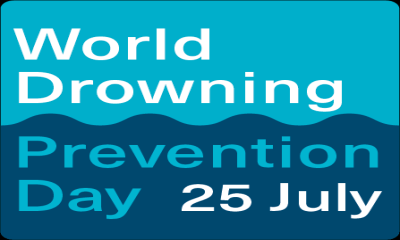Every morning in Bangladesh begins with laughter, play, and promise of a better tomorrow. But for 40 families every day, that promise ends in grief. Their children, often between the ages of 1 to 10, slip silently into water bodies and never come back. These aren’t just accidents. They are tragedies that leave behind stunned parents, empty cradles, and a silence that screams.
Unlike natural disasters, these deaths don’t make headlines. There are no sirens, no breaking news. And yet, drowning claims more children’s lives in Bangladesh than any disease or conflict. The World Health Organization calls it a leading but neglected public health issue, a silent epidemic.
In 2021, the United Nations General Assembly declared 25 July as World Drowning Prevention Day, following a historic proposal led by Bangladesh and Ireland. It was a turning point, a global call to recognize drowning is preventable. Even if that prevention can begin with a story.
This year’s focus, “Your story can save a life” urges us to reflect not only on the numbers but on the human stories behind them. Because one shared experience, one moment of courage or loss, can shift an entire community’s understanding of risk and safety.
Turning Grief into Guidance: The Power of Storytelling
In villages across Bangladesh, a unique and powerful approach of saving lives is sharing one’s story to community. When a child dies from drowning, the Centre for Injury Prevention and Research, Bangladesh (CIPRB) organizes “Social Autopsy.” It’s not medical, it’s emotional and communal post mortem to explore the social and systemic causes behind a death, uncovering barriers from every aspect.
Within ten days of the incident, the community gathers under a tree or beside a courtyard. A family member of the lost child shares what happened- the time, place, perceived reasons of drowning-the absence of supervision, and the moments of the incident. They are learning circles. People cry together, reflect on the incident, learn from it, and more importantly, pledge to prevent it from happening again.
After the meeting, a sapling is planted in memory of the child. That sapling grows with purpose, as a symbol of both sorrow and safety. These deeply personal stories do what statistics never can: they humanize risk and mobilize change.
What Works: Simple Solutions, Profound Impact
Backed by two decades of research, CIPRB has pioneered at least three groundbreaking interventions: Anchal Centers, community childcare systems that supervise children aged 1–5 during peak drowning hours. It has been proven to reduce drowning risk by up to 82%. And survival swimming teaching for children aged 6–10, has proven to reduce drowning risks by over 90%. Moreover, training parents, teachers, and even children in basic first response techniques, including CPR, is now a core focus. In many drowning cases, life or death depends on what actions are taken within the first five minutes after rescue. Recognized by the World Health Organization, these models prove that low-cost, community-led solutions can be scaled and sustained in similar settings for low- and middle-income countries.
Changing Climate, Growing Risks
With climate change escalating floods, water, and health hazards, disaster-prone communities like Taltoli and Bakerganj face greater risks. That’s why the “Nirapode Bhasa” initiative, supported by the Royal National Lifeboat Institution (RNLI), UK and the Princess Charlene of Monaco Foundation, is exploring how to build the resilience of drowning prevention interventions affected by climate change consequences.
A Call to Action: Share to Save
Today, as we mark World Drowning Prevention Day 2025, let’s pause and ask: Do I have a story that can save a life? Can my experience, however ordinary or tragic, be the wake-up call to someone else`s needs?
Sharing your story could be the most important thing we can do this year.
Because when we speak, we teach.
When we listen, we learn.
And when we act, we save lives.
(Focusing the World Drowning Prevention Day – 25 July 2025)
Writer: Deputy Director of Centre for Injury Prevention and Research, Bangladesh (CIPRB)






